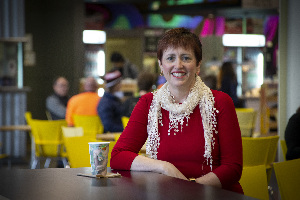

The Westpac Massey Fin-Ed Centre has updated its guidelines, which show what retirees need for a “no-frills” or more luxurious “choices” lifestyle around the country.
It found an increasing gap between what people were spending and what they received from the pension.
In metropolitan areas, a two-person household was typically spending $872 a week for a no-frills budget, compared to income of $600.30 from the pension.
If they opted for more choices they spent $1399.72 a week.
Households in provincial centres were spending $621.48 on a no-frills life and $1104.78 with more choices.
At the most basic level, a no-frills two-person household in the provinces would need to have a nest egg of $21,000. In cities they would need $266,000.
For a choices lifestyle they would need $783,000 in the main centres and $494,000 elsewhere.
“The gap has at least doubled for most households, which is a significant change from previous reports,” report author Claire Matthews said “But, to some extent, this reflects households being better prepared for retirement, allowing them to top up their superannuation payments to give them the lifestyle they want.”
For the first time, the Retirement Expenditure Guidelines include information about income for retired households, to complement information about how much they’re spending. It shows around half of retirees living a ‘choices’ lifestyle are still working – at least part-time – while the rest are accessing savings or investment income.
“It seems that reaching eligibility for NZ Super doesn’t mean stopping working for many,” Matthews said. “While it can mean a change in working patterns and styles, semi-retirement offers people options for topping up their superannuation and saving more for when they do stop working completely.”
The report found the most significant increases in expenditure were on transport, recreation and health.
“Looking at transport, the increases mostly related to the purchase of vehicles and passenger transport services,” Matthews said. “When you couple this with greater expenditure on recreation, it seems some groups at least are spending more on things they enjoy doing. You don’t buy holidays and cars if money is very tight.
“Rising health costs reflect the fact that New Zealanders are living longer and that medical products and equipment are becoming more expensive. There may also be more retirees choosing to pay for elective procedures because they have the means to do so.”
Matthews said the guidelines should provide updated information to guide adviser conversations.
“The information about those still working after ‘retirement’ may assist by helping people see that it is more common than they may have believed, and therefore help people to be more realistic about stopping work in their retirement planning.
"We hope that the guidelines can help people determine how much they will be spending in retirement, then to determine what their personal gap is in relation to NZ Super and therefore to work out what they need to save for the retirement they want personally.”
| « Fund manager research: Where to from here? | Mann on a mission to diversify financial advice » |
Special Offers
No comments yet
Sign In to add your comment

© Copyright 1997-2025 Tarawera Publishing Ltd. All Rights Reserved